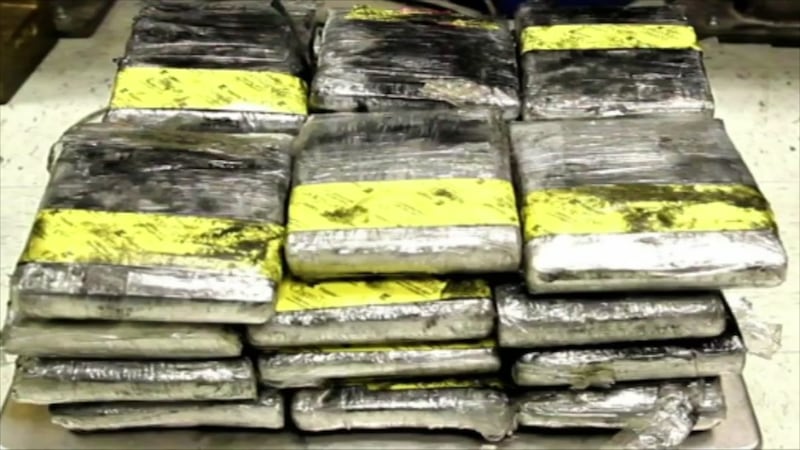The heroin epidemic costs taxpayers nearly $22 billion each year. More than $5 billion of that is spent on heroin-related crimes. Because western Pennsylvania has seen a deep impact from the addiction crisis, WPXI wanted to find out how the drugs are getting to our area.
11 Investigates started looking into the problem, and worked with federal investigators to track the heroin pipeline to Pittsburgh.
Target 11's Rick Earle learned the heroin highway begins at the United States' border with Mexico, and traveled there to learn more about the fight to stop it.
11 INVESTIGATIONS:
- RAW: Texas border checkpoint
- VIDEO: Pennsylvania Heroin Highway
- PHOTOS: Heroin Pipeline to Pittsburgh
- VIDEO: Heroin hiding spots
- PHOTOS: Heroin epidemic making its way into Pittsburgh
At the border crossing in Laredo, Texas, Channel 11's cameras were rolling as customs officers surrounded a pickup truck. A dog hit on it, causing officers to believe that heroin or other illegal drugs may be stashed under the hood.
"They're either looking at the radiator of the engine or maybe the air intake manifold," said Greg Alvarez, the Port Director with U.S. Customs and Border Protection.
In Laredo, cars line up at the crossing just across the Rio Grande, at a checkpoint that is the U.S.'s first line of defense. More than 15 million people travel through the crossing every year, and more than 2 million trucks pass through the nearby World Trade Bridge. Any one of those vehicles could be carrying heroin, that could then make its way into Western Pennsylvania.
"They might give a duffel back to the driver, and the driver may put it in the cab of the truck, and just take a chance," said Jim Reed, assistant special agent In charge for the Drug Enforcement Administration Houston Division.
TRENDING NOW:
- Jury selection for Cosby sex assault trial begins Monday in Pittsburgh
- Police: 15-year-old attempts to sell heroin to undercover officers
- 16-year-old girl found dead, weighed 56 lbs; parents charged
- VIDEO: Parents charged after teen found dead and malnourished
It's impossible for customs officers to check every vehicle. Instead, they rely on sophisticated license plate and RFID chip-scanners that read passports and relay information to a customs officer, all before a vehicle gets to the booth. At the checkpoint, the officers question drivers, while K-9 officers sniff for drugs. For drivers, it can be a hassle.
"I mean they pulled me over a few times and it's just for what? Nothing. I'm just minding my own business driving along," said Niles Pena, a driver from Texas.
Customs officers who are tasked with checking the more than 6,500 trucks that come across the World Trade Bridge each day rely on their experience when it comes to questioning drivers, reading behaviors, and looking for certain signs.
Days before Target 11's Rick Earle arrived in Laredo, officers acting on a hunch discovered more than $2 million of heroin hidden in the rim of a Mercedes SUV wheel.
"If we don't catch it that day, $2.5 million worth of heroin just keeps driving down the street into our neighborhoods and that's it," said Alvarez.
Officers have found drugs hidden in car batteries, fire extinguishers, and even engine blocks. When officers are suspicious drugs may be involved, they bring the trucks to a high-energy X-ray machine that has the ability to see through 6 inches of steel.
Customs officers said they've found heroin in toner cartridges being shipped inside trucks. Last year, the Port of Laredo seized 900 pounds of heroin, along with cocaine and methamphetamine. All illegal drugs that could have found their way to the streets of Pittsburgh.
"We actually deny these drugs from getting to Boston from going into somebody else's arm and that's the impact that we make, where we can prevent those overdoses in those larger eastern cities," said Reed.
Cox Media Group













